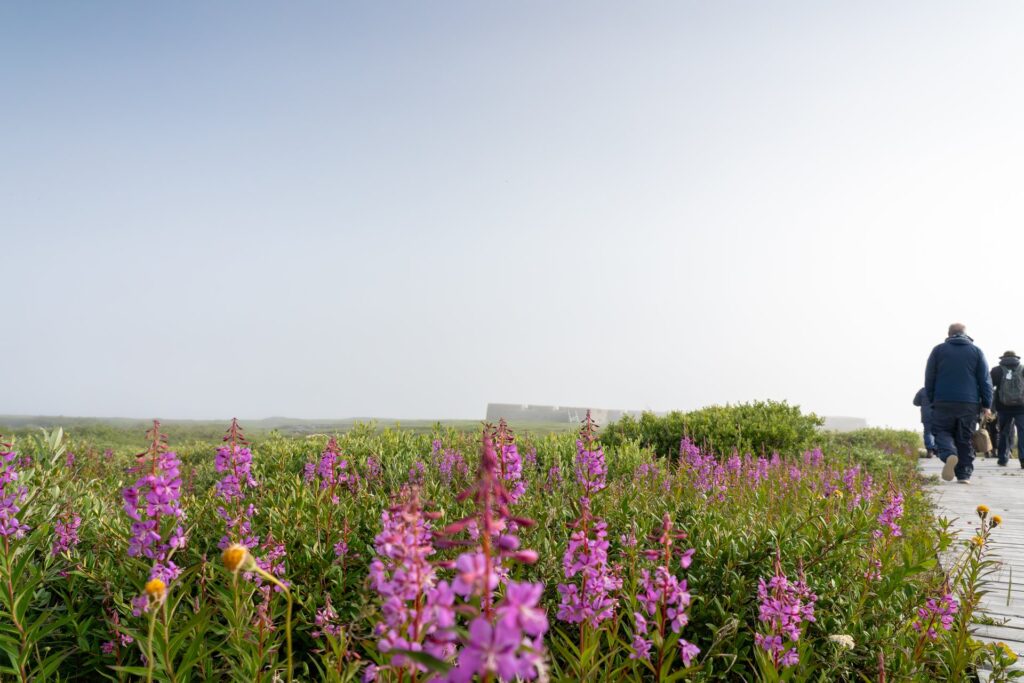The Tundra Biome: Climate, Characteristics, and Wildlife
The tundra biome, a vast and stark landscape, boasts unique beauty and resilient wildlife. Known for its cold, harsh climate and seemingly endless expanses of barren land, the tundra is not just a snow-laden wilderness, but a vibrant ecosystem teeming with life and natural wonders. Read on for a deeper exploration of the fascinating world of the tundra biome, and how you can experience this remarkable habitat first-hand through the Churchill Northern Studies Centre.

Climate of the Tundra
- Temperature: Winters are brutally cold, while summers are short and cool, making the average temperature of the tundra -34 to -6 degrees Celsius (-30 to 20 degrees Fahrenheit).
- Precipitation: The tundra receives low precipitation, similar to desert climates, usually 150 to 250 mm a year, and predominantly as snow.
- Wind: High winds are common, significantly influencing the tundra’s climate, geography, and the life forms that inhabit it.
The Tundra and Climate Change
Climate change poses a significant threat to the tundra biome, impacting it in profound and multifaceted ways. As global temperatures rise, the tundra’s defining feature — permafrost — begins to thaw, altering the landscape and the ecosystem it supports. This thawing not only leads to the release of greenhouse gasses previously trapped in the frozen ground, but also results in changes to the hydrology of the region. The melting permafrost can cause the ground to become unstable, affecting infrastructure and natural features.
Moreover, the characteristic cold-adapted species of the tundra — from tiny lichens to large mammals like the polar bear — face survival challenges as warming temperatures disrupt their habitat and food sources. The encroachment of species from warmer regions further complicates the ecological balance, leading to shifts in biodiversity and competition for resources. The changing climate also shortens the winter season and lengthens the summer, altering the breeding patterns and migration routes of various tundra wildlife, particularly bird species.
Conversely, the tundra plays a crucial role in the global climate system, primarily due to its capacity to act as a carbon sink. The cold, wet conditions of the tundra have historically led to slow decomposition of organic matter, resulting in vast amounts of carbon being stored in the frozen permafrost. This makes the tundra one of the largest natural reservoirs of carbon on Earth. However, as the permafrost thaws due to increasing temperatures, this stored carbon is at risk of being released back into the atmosphere in the form of carbon dioxide and methane, potent greenhouse gasses. This release can create a feedback loop, where increased greenhouse gasses lead to further warming and thawing of permafrost, thereby accelerating the pace of climate change.
The health and stability of the tundra biome are not only crucial for the species that inhabit it and the Indigenous communities that rely on it, but also for the global climate system, highlighting the interconnectedness of ecosystems and the urgent need for climate action to preserve these fragile habitats.

Wildlife of the Tundra
The tundra supports a diverse range of wildlife adapted to its extreme environment. These include:
- Mammals: The Arctic fox, polar bear, caribou, and musk oxen are all common mammals of the tundra. These animals have adapted to the cold with thick fur, fat layers, and behaviors such as migration and hibernation.
- Birds: The tundra is a breeding ground for many migratory birds, including the Snowy Owl and the Arctic Tern, which has the longest migration route of any bird. Here in Churchill, Manitoba, we play host to tens of thousands of migratory birds every spring, from Arctic Terns and Snowy Owls to Ross’ Gulls, Willow Ptarmigans, and more. See the beautiful birds of the tundra with us on our Spring’s Wings Learning Vacation!
- Insects: Insects in the tundra, though less conspicuous than larger fauna, play a pivotal role in the ecosystem. A variety of insects — including mosquitoes, black flies, and Arctic bumblebees — thrive during the brief but intense summer, pollinating plants and serving as crucial food sources for migratory birds. These insects have developed unique adaptations, such as antifreeze proteins (AFPs) in their bodily fluids and the ability to complete life cycles rapidly, to survive and reproduce in the short tundra summer.
Experience the Tundra First-Hand at the Churchill Northern Studies Centre
Reading about the tundra biome is enlightening and engaging, but experiencing it first-hand is truly unforgettable. Here at the Churchill Northern Studies Centre (CNSC), we offer unique opportunities to immerse yourself in this extraordinary environment through our Learning Vacations and Volunteer Expeditions.
- Learning Vacations: Join a CNSC Learning Vacation and gain a deep understanding and appreciation of Churchill’s rich history and breathtaking natural surroundings. Our programs feature scientific and cultural activities led by a friendly expert. Options include:
- Winter Skies: See the Northern Lights and learn about auroras and astronomy.
- Spring’s Wings: Experience one of Canada’s premier birding hotspots.
- Belugas in the Bay: Witness the thrilling sights (and sounds) as the largest population of belugas in the world makes the Churchill area their summer home.
- Lords of the Arctic: Visit the Polar Bear Capital of the World.
- Volunteer Expeditions: Participate in Volunteer Expeditions to contribute to ongoing research projects. It’s a chance to make a meaningful impact while experiencing the challenges and rewards of fieldwork in the Canadian subarctic.
- Education: We also offer school programs and university field courses for students eager to get a hands-on education experience.
The tundra biome, with its harsh climate, distinctive characteristics, and resilient wildlife, is a testament to the incredible adaptability of life. By visiting us at CNSC, you can not only witness this remarkable biome, but also contribute to its understanding and preservation. Whether you’re seeking knowledge, adventure, or the opportunity to make a difference, CNSC is the place for you!
The Churchill Northern Studies Centre is an independent, non-profit field station working to understand and sustain the North. We provide accommodations, meals, equipment rentals, and logistical support to scientific and social researchers working on a diverse range of topics of interest in the subarctic. We also facilitate learning programs throughout the year for non-credit learning vacations, university credit courses, and youth programming.
Explore our Learning Vacations to see how you can experience the subarctic in a way that’s meaningful, personal, and unforgettable. Or, donate today to support greater understanding of — and deeper appreciation for — the natural, social, economic, and cultural environments of the North.
